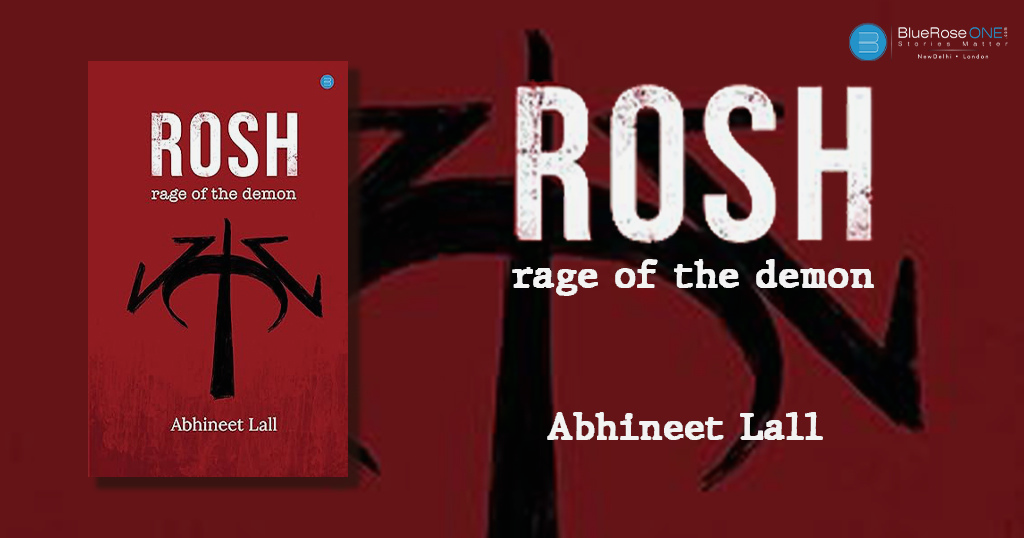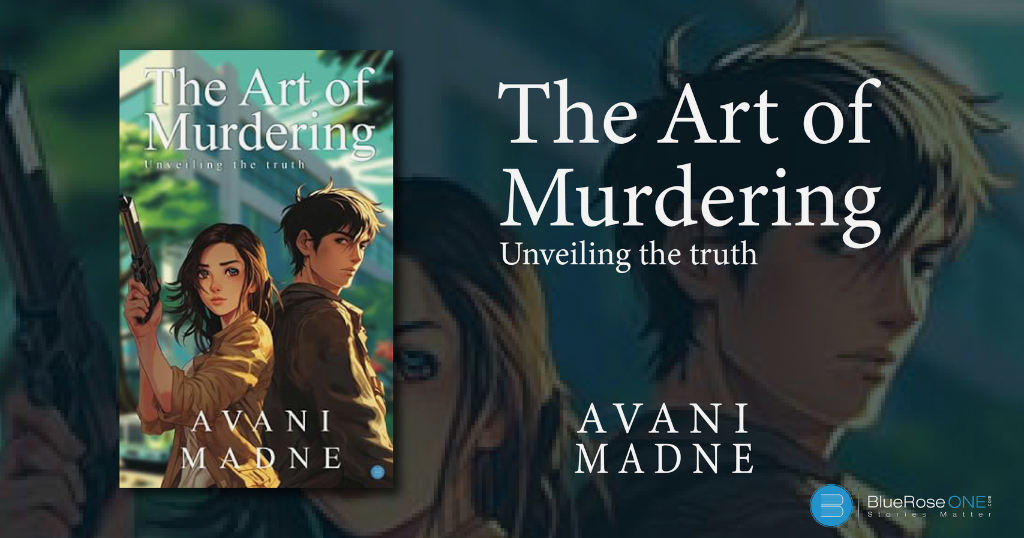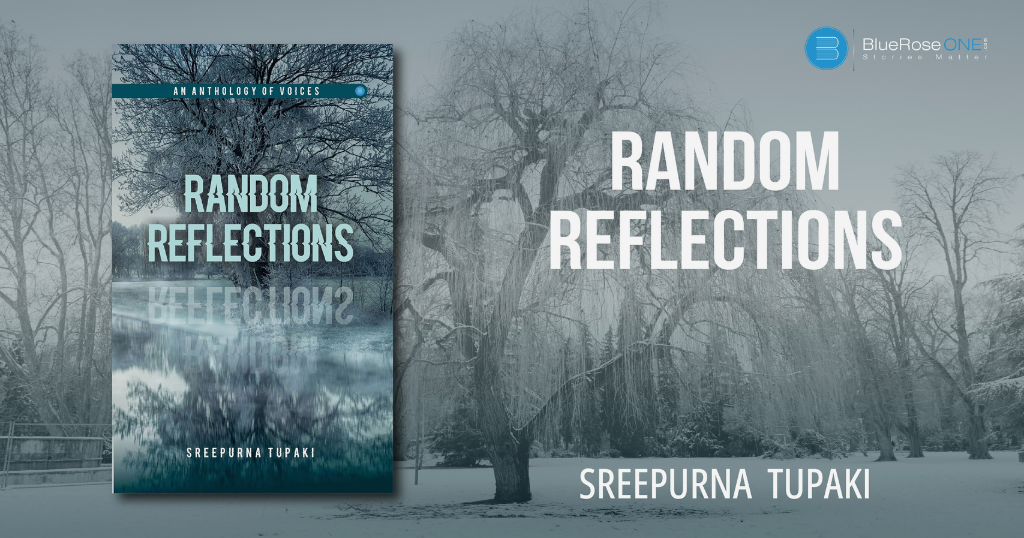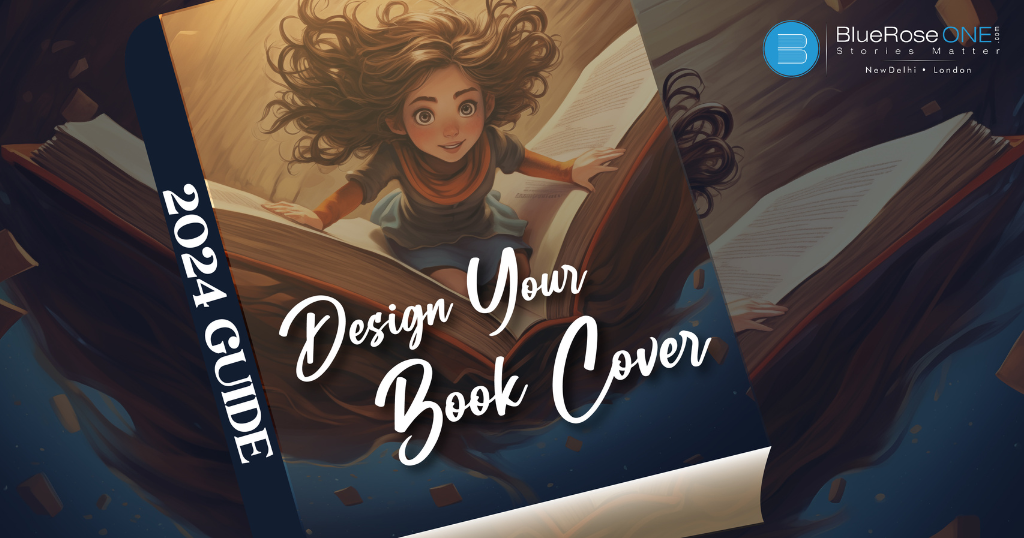
How to Design a Book Cover? Complete 2024 Guide
Designing your own book cover or engaging a professional designer is an important step in the publishing process. Your book cover is more than simply an aesthetic feature; it serves as your major marketing tool, providing key information about your book and enticing potential readers. In this detailed guide, we’ll look at both possibilities and explain the advantages and disadvantages of each. Pros and Cons of creating Book Cover by yourself Pros of Creating a Book: Cover Yourself Creative Freedom: Designing your book cover allows for complete creative freedom. You have control over every aspect, ensuring that your vision aligns with your book’s themes and messages. Freedom to Experiment: You can experiment with different design elements, colours, and styles without any limitations. This flexibility enables you to explore various possibilities until you find the one that best represents your book. Cost Efficiency: If you’re on a tight budget, creating your book cover can be a cost-effective solution. Many online tools and platforms offer free or affordable design resources. Cons of Creating a Book: Cover Yourself Fewer Sales: A self-designed cover may not have the professional polish that attracts readers. A poorly designed cover might lead to fewer sales as it may not resonate with your target audience. Lower Quality Cover: Without design expertise, your cover might lack the quality expected in the competitive book market. A poorly designed cover can create a negative first impression. Lack of Experience: Designing an effective cover requires knowledge of design principles. If you lack experience, your cover might appear amateurish and deter potential readers. Amateurish Design: An unprofessional-looking cover can give the impression that the content inside is also of low quality. This can discourage readers from exploring your book. You may also like: Is Kindle Direct Publishing right for Your Next Book? Designing Your Own Book Cover Here are few steps to design your book cover by yourself in 2024- Understand Your Book Know Your Audience Choose an Appropriate Style Emphasise Title and Author Name Use high-quality images Understand Your Book Before embarking on the journey of designing your book cover, it’s crucial to have an in-depth understanding of your own work. This involves delving into the genre, themes, and target audience of your book. Each genre has its own visual expectations, and your cover needs to align with these conventions to communicate effectively with potential readers. For example, if you’ve written a mystery novel, you might want to incorporate elements that evoke suspense or intrigue. If it’s a romance novel, the cover could feature romantic imagery. An excellent example of aligning the cover with the genre is Agatha Christie’s mystery novels, which are often adorned with mysterious and intriguing imagery that immediately signals the genre to the audience. Design Your Book Cover Now Know Your Audience Understanding your target audience is fundamental to creating a book cover that resonates with potential readers. Different demographics respond to various visual elements, so it’s essential to tailor your cover to the expectations and preferences of your intended readership. For instance, if your book is aimed at young adults, the cover might feature vibrant colours, dynamic imagery, or illustrations that align with the themes of the story. On the other hand, a business-related non-fiction book might have a more professional and minimalist cover design to appeal to a mature and professional audience. You may also like: List of 15 Prestigious Literary Awards in 2024 Design Your Book Cover Now Choose an Appropriate Style The style of your book cover is a crucial aspect of its overall impact. Styles can range from illustrative and symbolic to photographic and minimalist. The chosen style should complement the genre and mood of your book, effectively conveying the emotions you want to evoke in potential readers. For a thriller novel, a suspenseful and mysterious design might involve dark colours, intriguing symbols, and shadows. In contrast, a light-hearted romance novel might opt for a more whimsical and colourful design to reflect the romantic themes. The key is to align the chosen style with the essence of your book. Design Your Book Cover Now Emphasise Title and Author Name One common mistake in book cover design is neglecting the importance of readability. Your title and author name should be prominent and easily readable, even in thumbnail size. The font you choose should align with the genre and theme of your book while striking a balance between aesthetics and readability. Consider J.K. Rowling’s “Harry Potter” series; the titles are prominently featured, often with distinct typography that reflects the magical and whimsical nature of the stories. The emphasis on the title makes it instantly recognisable to readers. You may also like: A Complete List of Anuja Chuahan Books Design Your Book Cover Now Use high-quality images If your book cover includes graphics, drawings, or photographs, be sure to select high-resolution, professional-quality visuals. Blurry or pixelated photographs might detract from the professionalism of your book and provide a bad impression. Take, for example, Michelle Obama’s memoir “Becoming.” The cover image is a high-quality portrait of the author, communicating authenticity and enabling readers to engage with her personal tale. The usage of a clear and compelling image enhances the overall success of the book cover. By adhering to these principles, you can create a book cover that not only visually appeals to your target audience but also effectively communicates the essence of your book. Each element should work harmoniously to create a compelling and memorable cover that entices readers to explore your work. You may also like: Book Writing Tools That Actually Make a Difference Design Your Book Cover Now Hiring a professional designer Pros of Hiring a Designer Professional Book Cover: A professional designer brings expertise to create a visually appealing and marketable book cover. A polished cover signals quality content to potential readers. Better Marketing and Sales: Professionally designed covers often result in better marketing and increased sales. Readers are more likely to trust a book with an attractive and professionally crafted cover. No Need for Design Mastery:…

How to plan a successful book launch in 2024
Authors set out on the complex route of the book launch with a great deal of enthusiasm and commitment. The whole process requires patience and persistence. Several meticulously planned tasks must be completed for the process to be a green flag, from writing an engaging manuscript to handling the challenges of distribution and promotion. The book’s journey within the literary canon is shaped by the distinct obstacles and opportunities that each stage offers. A marketing plan is essential to a successful book launch because it enables authors to connect with their target readership and create buzz about their writing. To properly customise your approach, start by determining who your target audience is and learning about their preferences. Use pre-launch strategies to create buzz. Cover reveals teaser trailers and exclusive first looks posted on social networking sites are a few examples of this. Use email newsletters to interact with potential readers by providing exclusive content and behind-the-scenes insights. Utilise social media’s power to establish a vibrant online presence. Create a content calendar that combines interactive information, eye-catching images, and promotional postings. Use social media sites like Facebook, Instagram, and Twitter to engage with your audience and create buzz. Work along with bloggers and book influencers who are experts in your genre. Sincere evaluations and recommendations from reliable sources can greatly increase the visibility of your book. Think of online book premieres, Q&A sessions with authors, or live readings. These activities draw in new readers in addition to interacting with your current readership. Make the most of your book’s online marketplace presence by utilising keywords, intriguing book descriptions, and well-thought-out pricing. Use social media or paid advertising on websites to increase the number of people who see your book. Organise a Book Launch Event Organising a book launch party is a fun way to honour your literary accomplishments and establish a relationship with fans. Start by stating the goal of the event, be it an in-person meeting, a virtual launch, or a hybrid of the two. Choose a location for your physical event that fits the book’s concept and intended demographic. Think about reading rooms, bookstores, or other distinctive places that add character. Make an eye-catching invitation or event page with information about the date, time, venue, and any extracurriculars. Use email newsletters and social media to build anticipation. If you want to reach more people with your event, think about working with book clubs or area influencers. Use social media live streaming or technologies such as Zoom for virtual debuts. Make sure that the audience interacts with your content through conversation captivating imagery, and pre-launch tech tests. To encourage attendance and foster a sense of exclusivity, provide limited-edition items, signed copies, or prizes as unique incentives. Use a variety of platforms to publicise the event, such as social media, your author’s website, and regional media channels. Motivate guests to spread the word about the event on their social media accounts, building a community around your book. A well-thought-out book launch event, whether it be in person or virtually, develops your relationship with readers, makes an impression on attendance, and lays the groundwork for a profitable book release. You may also like: 10 Elf Name Generators Fantasy Writers Can’t Miss! Post-Launch Engagement A crucial stage that maintains the momentum created during your book launch and creates enduring relationships with your readership is post-launch interaction. Encourage reviews and testimonials from readers; good evaluations will increase the visibility and trustworthiness of your book. Continue to post pertinent content, give behind-the-scenes looks, and reply to comments to interact with your audience on social media. Build a community around your writing so that people are drawn in and invested in your creative endeavours. Take part in online forums and book clubs that are relevant to your genre. Participate in conversations, answer inquiries from readers, and think about holding online author live sessions. This face-to-face communication not only establishes trust but also keeps your book in prospective readers’ thoughts. Look into joint ventures with other writers or leaders in your field. Collaborative efforts and cross-promotions can help you reach a wider audience and bring your book to new readers. To rekindle interest in your book, think about extending limited-time discounts or post-launch promotions. Use email newsletters as a direct line of communication with your audience, providing them with updates on upcoming initiatives, occasions, and special content. After the book is released, maintaining a consistent and genuine presence is essential to developing a devoted readership and presenting yourself as a personable and responsive writer. By remaining in touch, you create the groundwork for a long-lasting and prosperous writing career in addition to nurturing your current readership. You may also like: 10 Classic Flat Character Examples in Literature and Film Advantages of a Book Launch Observation and Acknowledgment:Your work can reach a larger audience with the help of a good book launch. A book’s discoverability is enhanced through media attention, social media buzz, and focused marketing campaigns. A successful debut may result in nominations for literary honours, which will further acknowledge your contributions and establish your authority in the field. Creating Trustworthiness:Acknowledgements and favourable reviews received at a book launch can create important relationships in the literary world. Acknowledgement from prominent figures in the sector enhances your overall reputation as a writer. A well-received launch could lead to speaking engagements, workshops, or literary events, giving you more venues to promote your writing and establish your authority as an author. Developing an audience:A sense of community is cultivated long after the book is out through continuing communication with readers via newsletters, social media, and author events. A committed fanbase develops into a useful resource for new book launches and author campaigns. Customer Reviews as Advertising Instruments: Positive reader reviews after a launch serve as natural marketing resources. Your book’s reach can be greatly expanded and sales can be sustained by readers suggesting it to their networks. Boosting Sales and Marketing:A flawless book launch has a long-lasting effect on the sales trajectory…
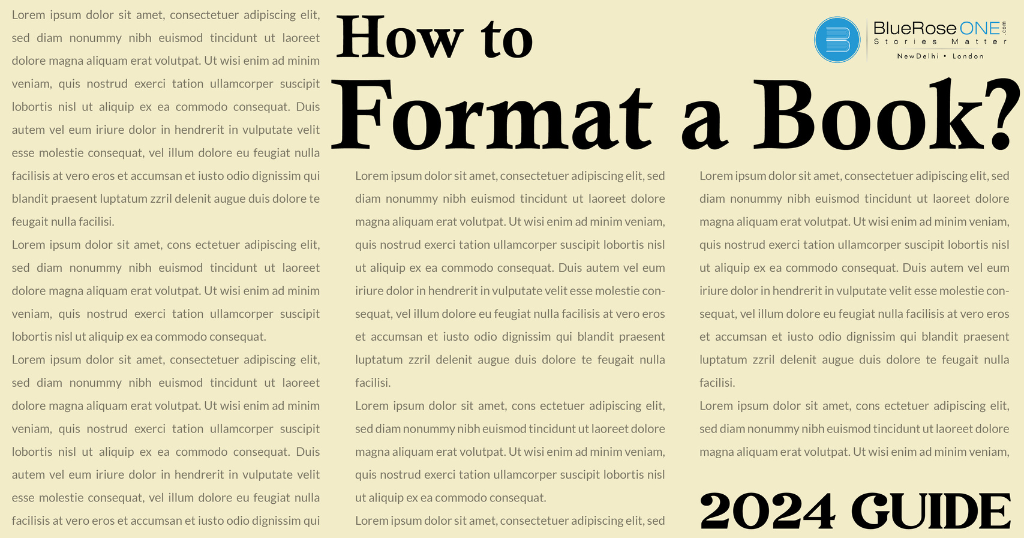
How to Format a Book 2024 – Guide to Master it
Writing a book is an enormous achievement, but presenting it in a polished and reader-friendly style is as important. Whether you self-publish or submit your book to established publishers, appropriate formatting improves the overall reading experience. In this comprehensive guide, we’ll go over the essential steps for effectively formatting your book, including file types, novel formatting guidelines, selecting the right formatting programme, creating front and back matter, ebook and print book formatting rules, trim size selection, designing beautiful chapter pages, book formatting services, and key formatting terms. Understanding File Types of Book Formatting Before delving into the formatting process, it’s crucial to understand the different file types associated with book formatting. Common file types include: Word Document (.doc or.docx): Widely used for drafting and editing manuscripts. PDF (Portable Document Format): Ideal for preserving formatting across various devices and platforms. EPUB (Electronic Publication): Specifically designed for ebooks, allowing dynamic text adjustment. MOBI (Mobipocket): A format compatible with Kindle devices and apps. Each file type serves a specific purpose in the publishing journey, and understanding their nuances is fundamental for effective book formatting. You may also like: Is Kindle Direct Publishing right for Your Next Book? Novel Formatting Guidelines Novel formatting involves adhering to specific guidelines to ensure a seamless and professional presentation. These guidelines cover aspects such as font choice, line spacing, paragraph indentation, and more. Consistency is key in novel formatting, creating a visually appealing and easy-to-read experience for your audience. Step 1: Decide Which Formatting Programme to Use Choosing the right formatting programme is a critical decision in the book formatting process. The programme you select will influence the overall look and feel of your book, impacting factors such as layout, font choices, and general aesthetics. Here are some popular options and considerations: Microsoft Word: Strengths: user-friendly, widely accessible, and familiar to many writers. Considerations: Limited control over intricate layouts, especially for complex designs. Google Docs: Strengths: collaborative features, cloud-based accessibility, and basic formatting tools. Considerations: Limited advanced formatting options compared to dedicated design software. Scrivener: Strengths: Tailored for writers, allowing easy organisation and navigation of large manuscripts. Considerations: It may have a steeper learning curve for those unfamiliar with the software. Adobe InDesign: Strengths: professional-grade layout capabilities; extensive design features. Considerations: requires a learning curve; may be more suitable for complex layouts. Consider your familiarity with each programme, the complexity of your book’s design needs, and your budget. For instance, an author with a straightforward manuscript might find Microsoft Word sufficient, while a graphic-heavy or intricate design might benefit from Adobe InDesign. Assume you’re creating a nonfiction book with basic formatting requirements, such as headers, subheadings, and occasional graphics. In this scenario, Microsoft Word, with its user-friendly design and ubiquitous availability, may be the most practical option. It helps you to concentrate on your content without being distracted by complex design aspects. Step 2: Creating Your Front and Back Matter Front and back matter are crucial components that frame your book, providing essential information and enhancing the reader’s experience. Understanding how to structure these sections contributes to the overall professionalism of your work. Front Matter: Title Page: Includes the book title, author’s name, and possibly a subtitle or series information. Table of Contents: Lists chapters or sections with page numbers. Copyright Page: Contains copyright details, publication information, and legal notices. Dedication: Optional, for expressing gratitude or dedicating the book to someone Back Matter: Acknowledgments: Express gratitude to individuals or entities who contributed to the book. Author bios: brief biographies of the authors, providing context or credentials. Additional Titles: Promote other works by the author, encouraging continued readership. For example, in a fiction book, the title page may have a fascinating title and the author’s name, establishing the tone for the story. The copyright page provides legal protection, while the dedication page allows the author to convey personal views. The table of contents helps readers navigate the chapters. Acknowledgments thank individuals who helped the author; author profiles give information about the creators; and noting further titles encourages readers to read more of the author’s work. Properly organising these pieces improves the book’s professional appearance. Step 3: Rules and Guidelines for Proper Ebook Formatting Ebook formatting is a critical aspect of the modern publishing landscape, considering the increasing prevalence of digital reading devices. Authors must adhere to specific rules to ensure their ebooks are visually appealing and function seamlessly across various e-reader devices. Embedding Fonts: One crucial rule in ebook formatting is the embedding of fonts. Unlike print books, where fonts are fixed, ebooks should embed fonts to maintain consistency across different devices. Embedding ensures that the chosen font is preserved, preventing potential distortions or substitutions on readers’ devices. For example, if an author selects a unique font for chapter headings, embedding that font ensures readers see the intended visual presentation on their e-readers. Using Consistent Styling: Consistency in styling is paramount for a professional and polished ebook. Authors must adhere to a consistent format for headings, paragraphs, and other text elements. This ensures a cohesive reading experience and prevents distracting variations that may arise from device-specific rendering. For instance, using the same font size and style for chapter headings throughout the ebook maintains a visually harmonious layout. Optimising Images for Digital Viewing: Images play a significant role in enhancing the visual appeal of an ebook. Authors need to optimise images for digital viewing to prevent issues such as slow loading times or distorted visuals. Optimisation involves compressing images without compromising quality, ensuring a smooth reading experience. For example, an author including illustrations in a children’s ebook must ensure the images are appropriately sized and formatted for optimal viewing on diverse devices. Understanding these intricacies of ebook formatting is crucial for authors seeking to reach a broad digital audience while maintaining the visual integrity of their work. Step 4: Rules and Guidelines for Proper Print Book Formatting Print book formatting involves a distinct set of rules tailored to the physical medium. Proper formatting is essential for producing print copies that meet industry…
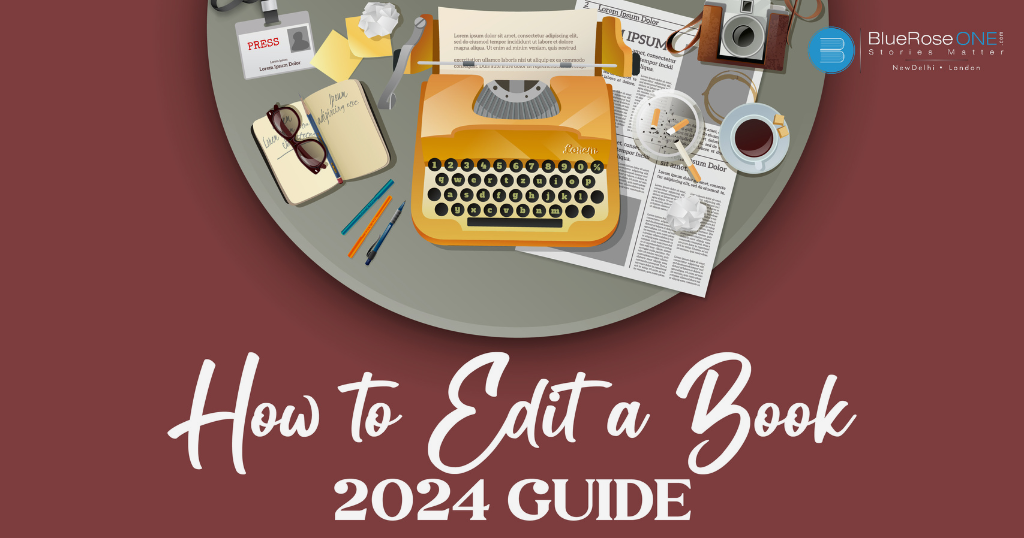
How to Edit a Book like a Pro – 2024 Guide
Starting the process of converting your manuscript into a published book requires more than simply writing; it also necessitates thorough editing. Whether you want to self-publish or collaborate with major publishing organisations, the editing process is the first step towards transforming a raw manuscript into a literary masterpiece. Every successful book goes through multiple revisions to enhance its story, and no bestseller emerges undamaged from the editing process. Your responsibility as a writer extends beyond storytelling; you’re inviting readers to invest their time in the world you’ve crafted. To meet this commitment, your manuscript must undergo thorough editing to ensure it delivers a well-written, entertaining, and engaging story free of structural issues that could compromise its believability. The editing process is the linchpin that distinguishes between a good story and a great book. Editing is a multi-faceted art that unfolds in several crucial steps, each contributing to the refinement of your manuscript. The first step involves taking a strategic break after completing your manuscript. This pause allows for a fresh perspective, making it easier to identify inconsistencies, errors, and areas in need of improvement during subsequent edits. The Importance to Take a Break Before Editing! The first stage in the editing process is to take a deliberate break from your text rather than plunging right into it. After you’ve finished writing your work, you should take a break from it. This brief break gives you a new perspective when you return to edit. Why is this break necessary? When you’re truly into writing, you become engaged in the universe you’ve constructed. Taking a pause helps you to stand back and look at your job more critically. It helps you break off emotional attachments to certain phrases or concepts, allowing you to spot inconsistencies, faults, and possibilities for growth. During this break, it’s advisable to engage in activities that divert your attention, whether it’s reading a different genre, pursuing a hobby, or simply taking a walk. This distance helps you return to your manuscript with a renewed focus, making the editing process more effective. Structural Editing: Structural editing involves a comprehensive review of your book’s foundational elements. This phase focuses on the overall architecture of your narrative, addressing key components such as plot, character arcs, pacing, and the general flow of the story. Here are the key aspects to consider during structural editing: Plot Analysis: Examine the plot structure to ensure it has a compelling beginning, a well-developed middle, and a satisfying conclusion. Look for any plot holes or inconsistencies that might affect the overall coherence of the narrative. For example, if a character’s motivation suddenly changes without sufficient explanation, it can disrupt the reader’s engagement. Character Arcs: Characters are the heart of any story. Evaluate the development of each character, ensuring they are well-rounded and believable. Check for consistency in their actions, reactions, and motivations throughout the story. If a character undergoes a significant transformation, make sure it is adequately justified and portrayed. For instance, if a shy introvert becomes a fearless leader, there should be gradual growth or an impactful event prompting this change. Pacing: Analyse the pacing of your story to ensure it maintains a balance between action and quieter moments. Pacing is crucial for keeping readers engaged. If certain sections feel rushed or overly prolonged, it can affect the overall reading experience. Consider the flow of tension and release in your narrative, aligning with the story’s genre and tone. Overall Flow: Consider how each chapter and scene transitions into the next. Ensure a seamless flow that guides readers through the story without confusion. Transitions should be smooth, with a logical progression that maintains the narrative’s momentum. You may also like: 10 Classic Flat Character Examples in Literature and Film Character Development: Character development is a crucial aspect of effective storytelling. Well-developed and relatable characters enhance the reader’s connection to the narrative. Here’s how you can approach character development during the editing process: Depth and Consistency: Assess each character’s depth and consistency throughout the story. Characters should feel authentic, with motivations and actions that align with their established traits. For example, if a character is introduced as a meticulous planner, sudden, impulsive decisions without proper justification may appear inconsistent. Motivations and Goals: Clearly define the motivations and goals of each character. Readers should understand why characters act the way they do. If a character’s motivation is unclear or changes abruptly, it can lead to confusion. Provide sufficient context and reasoning for character decisions. Evolution and Arcs: Characters should undergo growth or change over the course of the story. Evaluate whether each character has a compelling arc with challenges that drive development. An example would be a protagonist overcoming personal fears or flaws to achieve their goals. Dialogue and Voice: Review dialogue to ensure it aligns with each character’s unique voice. Characters should have distinct ways of speaking that reflect their personalities. Consistent dialogue contributes to the authenticity of characters. Secondary Characters: Pay attention to secondary characters and their roles in the narrative. While they may not be as central as the main characters, their presence should contribute meaningfully to the story. Avoid introducing characters without purpose or leaving loose ends in their arcs. By addressing these aspects of character development, you ensure that your readers engage with characters on a deeper level, making the narrative more immersive and memorable. You may also like: 10 Elf Name Generators Fantasy Writers Can’t Miss! Dialogue Enhancement: Dialogue is the heartbeat of a narrative, giving characters a voice and creating a dynamic connection with readers. Effective dialogue not only propels the story forward but also serves as a powerful tool for character development. During the editing process, focusing on dialogue enhancement can elevate your manuscript from good to exceptional. Authenticity in Dialogue:Authentic dialogue mirrors real-life conversations, capturing the nuances of speech patterns, vocabulary, and tone unique to each character. To achieve authenticity, immerse yourself in your characters’ personalities, backgrounds, and motivations. Consider their education, upbringing, and life experiences, as these factors shape the…
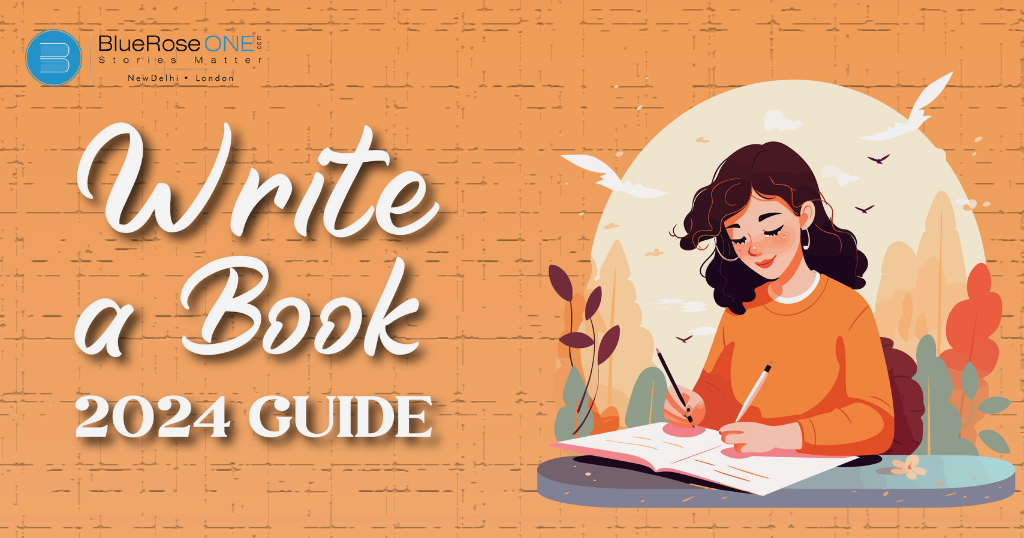
A Complete 2024 Guide: How to Write a Book & Get it Published
Starting on the journey to write a book is a life-changing decision, offering the potential to influence countless lives and make a lasting impact. However, the path to becoming an author is no walk in the park. The process of writing a book is filled with challenges that might tempt you to throw in the towel. Whether it’s grappling with a lack of ideas, losing interest in your own message, succumbing to distractions, or feeling overwhelmed by the enormity of the task, the hurdles are numerous. Imagine if you had a roadmap, guiding you precisely on: Where to start your writing journey. The detailed steps involved in each phase. Strategies to conquer fear, procrastination, and writer’s block. Techniques to prevent that overwhelming feeling from taking over. Writing a book is within your grasp, and it might happen sooner than you think. In today’s digital age, you have an array of writing tools at your disposal to expedite the process. Unlocking the door to book writing success involves following a proven, straightforward, step-by-step plan. In this journey, you’ll have to refine your writing techniques that may seem a little slow as a process. However, armed with a reliable blueprint, you can overcome obstacles and make significant progress in your book-writing journey. Allow us to share a little research and a personal approach to how to write a book, providing insights that have the potential to transform your writing experience. The goal is to offer you a guiding light through the often challenging process of turning your book idea into a reality. So, let’s dive into the steps that can redefine your book-writing journey. You may also like: Is Kindle Direct Publishing right for Your Next Book? 1. Where to start your writing journey The journey of writing a book requires thoughtful preparation—a step that, in the long run, you’ll appreciate and thank yourself for. Before diving into such a monumental task, consider the importance of laying a solid foundation. Comparatively, attempting to cut down a vast grove of trees with just an axe would be impractical. You need the right tools—a chainsaw, perhaps multiple, kept sharp and fueled adequately. The analogy is clear: don’t overlook the foundational aspects of the book-writing process. Step 1: Establish Your Writing Space Creating a conducive writing space is crucial. Contrary to the belief that you need a dedicated sanctuary. The lesson here is that you make do with what you have. Some of your most productive days could be spent on a sagging couch. While a more comfortable and private space is preferable, the key is adaptability. Real writers can write anywhere. Some thrive in restaurants or coffee shops. Writing in a noisy environment builds resilience, making any other setting seem ideal. The point is that your writing space is flexible, and the key is to start writing regardless of your surroundings. Step 2: Assemble Your Writing Tools In the world of writing, efficiency is paramount. There was no luxury of handwriting and then typing for layout; everything went straight from the keyboard. This practice has endured in my book writing, primarily done at a keyboard. While most authors follow suit, some still handwrite initial drafts and then transition to digital formats. However, presenting a typewritten or handwritten manuscript to a publisher is unthinkable in today’s industry. Microsoft Word is the standard, ensuring your submissions align with the industry’s expectations. For a robust electronic organizing system, Scrivener stands out, seamlessly interacting with Word files. Its versatility spans both PCs and Macs. Keep in mind that Scrivener has a learning curve, so it’s beneficial to acquaint yourself with its features before diving into writing. Additionally, various tools cater to specific book-writing needs. Explore the popular ones listed in dedicated blogs and writing tools pages for a comprehensive selection. Step 3: Equip Your Writing Space If you are handwriting your drafts, invest in quality paper, pencils, and erasers. Regardless, a computer is essential for research and communication with agents, editors, and publishers. Opt for the latest, high-capacity, and speedy computer within your budget. Anticipate your workspace needs. Stock up on stationery, organization tools, and peripherals like staplers, rulers, tape dispensers, and clocks. Create a comfortable and well-equipped environment with ergonomic furniture. A good chair, especially, is non-negotiable for prolonged writing sessions. Prioritize posture and comfort; your creativity shouldn’t be hindered by discomfort. Whether or not you currently use all the listed items, make a comprehensive list of your anticipated needs. As you progress in your writing journey and gain financial traction, continue upgrading your workspace. Remember, the key is to start writing, making the most of what you have, and evolving your setup along the way. You may also like: List of 15 Prestigious Literary Awards in 2024 Start your writing journey in 2024 now 2. The detailed steps involved in each phase Writing a book may seem like an overwhelming task, akin to conquering a colossal project. However, the key lies in breaking down this formidable endeavor into manageable fragments. As the saying goes, the way to eat an elephant is one bite at a time. This adage aptly applies to crafting a book, which, despite its grandeur, is fundamentally an amalgamation of sentences, paragraphs, and pages. Step 1: Deconstructing the Monolith The initial challenge is to shift one’s perspective from viewing the book as a 400-page monstrosity to recognizing it as a composition of various small components. Writing cannot occur in a single Herculean effort any more than one could consume an entire elephant in a solitary sitting. The goal is to simplify the process, acknowledging that progress is incremental. While the first week may yield a modest digit of pages, a few months down the line, the tally could extend into the second hundred. The strategy is to distill the overarching book idea from a page or so into a single sentence—a concise premise. The specificity of this one-sentence premise becomes instrumental in maintaining focus during the writing journey. However, before progressing to…
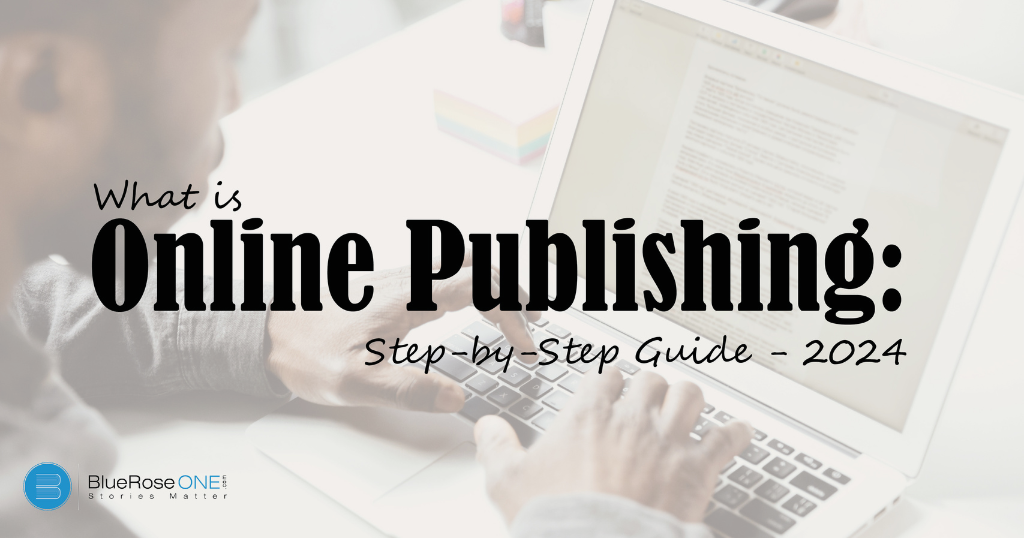
Guide on How to Write and Publish a Book Online – 2024 Guide
What is Online Publishing? Online publishing is the dissemination of material via digital platforms accessible via the internet. This new type of publishing has altered the landscape of information sharing by providing a dynamic and accessible platform for writers, journalists, corporations, and individuals to reach a worldwide audience. At its heart, internet publishing includes a wide variety of material, such as articles, blogs, e-books, digital magazines, and more. The transition from traditional print to online platforms democratised the publishing process, allowing anybody with an internet connection to become a content provider. This accessibility has resulted in the proliferation of voices, opinions, and specialty material that would have been difficult to accommodate in traditional publishing methods. E-books have become a popular format for online publishing, allowing authors to independently publish and distribute their works without the need for traditional publishing houses. This has empowered writers to retain greater control over their content, cover design, and distribution, opening new avenues for both established and emerging authors. You may also like: The Rise of Shakti by Megha Dinesh: Book Review Steps of How to Publish Online Publishing a book online has become more accessible than ever, thanks to digital platforms that allow authors to share their work with a global audience. Here are the steps to guide you through the process of publishing a book online: Write Your Book Choose Your Publishing Platform Create an Account Format Your Manuscript Design a Book Cover Set the Price Choose Distribution Options Upload Your Book Set Metadata Review and Publish Market Your Book Monitor Sales and Reviews Write Your Book: Initiate your online publishing journey by crafting a compelling manuscript. Make sure your content is not only engaging but also meticulously edited and polished. The strength of your manuscript forms the bedrock of your success in the world of online publishing. Choose your Publishing Platform: Carefully pick an online publishing platform that aligns with your objectives. Popular choices include Amazon Kindle Direct Publishing (KDP), Smashwords, and Draft2Digital. Each platform comes with its own set of requirements and advantages, so select the one that best suits your needs and goals. Create an Account: Take the crucial step of creating an account on your chosen publishing platform. During the sign-up process, provide all necessary information and take the time to thoroughly read and comprehend the terms and conditions. This foundational step sets the stage for your online publishing endeavour. Format Your Manuscript: Prepare your manuscript according to the formatting guidelines specified by the chosen publishing platform. These guidelines often cover aspects such as file format, layout, and cover design. Adhering to these specifications is crucial for a seamless publishing process, ensuring that your book meets the platform’s requirements. Design a Book Cover: Craft an attention-grabbing book cover that resonates with your target audience. Many online publishing platforms provide tools for cover design, or you can opt to enlist the services of a professional designer. A visually appealing cover enhances the marketability of your book, making it more likely to attract readers. Set the Price: Make a strategic decision on the pricing of your book. Depending on the platform, you may have the flexibility to set your own price or need to adhere to specific pricing structures. Consider market trends, competitor pricing, and the perceived value of your work to determine an optimal price point. Finding the right balance is essential for attracting readers while ensuring your work is appropriately valued. Choose Distribution Options: Decide on the distribution strategy for your book. Some platforms may offer exclusive distribution agreements, limiting where your book is available, while others allow broader distribution across various online retailers. Consider the reach you want for your work and choose the option that aligns with your publishing goals. Upload Your Book: Follow the platform’s guidelines to upload your meticulously formatted manuscript and eye-catching book cover. Thoroughly review all details to ensure accuracy and a seamless transition from upload to publication. Set Metadata: Provide essential metadata, including the book title, author name, a compelling book description, and relevant keywords. This information plays a crucial role in making your book discoverable to potential readers during online searches. Review and Publish: Use the platform’s preview tools to review how your book will appear to readers. Once satisfied with the presentation, proceed with the publishing process. Your book should be available for purchase shortly after, marking the culmination of your online publishing journey. Market Your Book: Deploy a comprehensive marketing strategy to amplify your book’s visibility. Leverage social media platforms, author websites, and other promotional channels to create widespread awareness. Explore avenues like running promotions or utilising online advertising to reach your target audience effectively. An effective marketing campaign is pivotal to driving book sales and building a dedicated readership. Monitor Sales and Reviews: Keep a vigilant eye on your book’s sales performance and reviews. Engage with readers through various channels and consider their feedback as valuable insights for potential improvements. Positive reviews play a crucial role in enhancing your book’s visibility and credibility within the literary marketplace. Explore additional publishing avenues: Diversify your publishing strategy by exploring additional formats, such as audiobooks, or opting for print-on-demand services. These avenues can cater to different audience preferences and expand your book’s accessibility. Additionally, explore promotional opportunities and potential partnerships to further broaden your book’s reach and impact. Embracing various publishing formats and promotional strategies can contribute to the long-term success of your literary work. You may also like: Negative Adjectives to Describe People: Examples and Meanings Pros and Cons of Online Publishing Pros of Online Book Publishing: Accessibility: Online publishing platforms break down geographical barriers, allowing authors to showcase their work to a global audience. This democratization of access ensures that literary creations can reach readers worldwide, fostering diversity in literature and providing authors with a chance to connect with an expansive and varied readership. It opens doors for authors who might otherwise struggle to break into traditional publishing markets, offering a level playing field where talent and creativity take precedence over geographical location….


